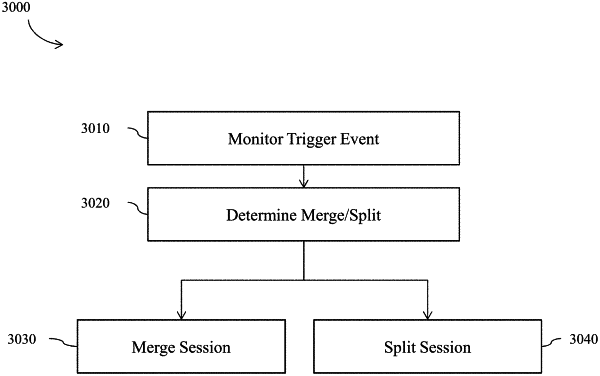| CPC A63F 13/79 (2014.09) [A63F 13/352 (2014.09); A63F 13/55 (2014.09); A63F 13/77 (2014.09); A63F 2300/5533 (2013.01)] | 16 Claims |

|
1. A method for seamless session management comprising:
monitoring a video game for a triggering event, the video game being executed in one or more data network sessions, each data network session for hosting at least one player console participating in the video game identified by a player identification, and each data network session including at least one object having an object identification, wherein player consoles within a selected network session can communicate with each other in the video game, and player consoles from a first network session cannot communicate with player consoles from a second network session in the video game; and
at least one of merging the first network session and the second network session based on the monitored triggering event for allowing the player consoles of the first and second network sessions to communicate with each other, and splitting the selected network session based on said monitored triggering event to prevent the player consoles of the selected network session to communicate with each other, wherein said merging and splitting comprises resolving object identifications during gameplay of the video game, said resolving object identifications comprises:
allocating object identifications via each player console to be merged for each object in the network session of the selected player console;
transmitting a copy of the allocated object identifications to each player console to be merged;
waiting for object mappings from all player consoles;
allocating object identifications for unmapped objects;
assigning a priority to each player console to be merged;
resolving conflicts between allocated object identifications for unmapped objects based on the assigned priority of each player console;
assigning a new public object identification for all objects of each player console to be merged, wherein the public object identifications do not conflict with one another;
building object mappings based on the assigned new public object identifications; and
swapping said allocated object identifications.
|